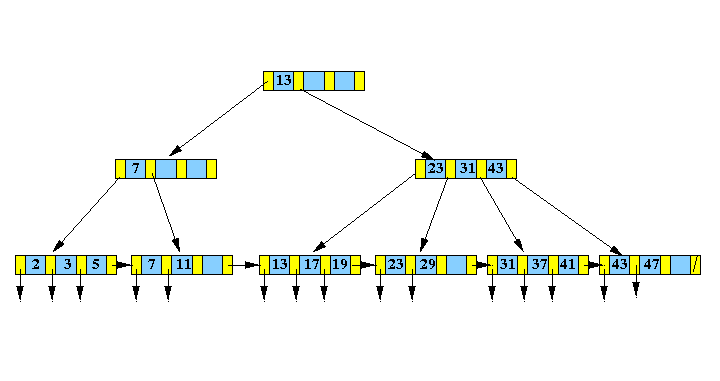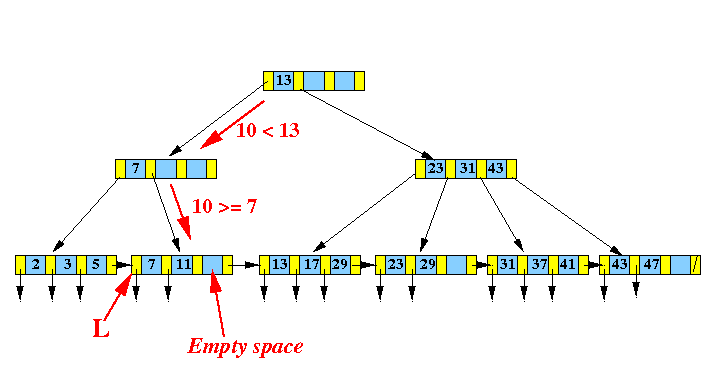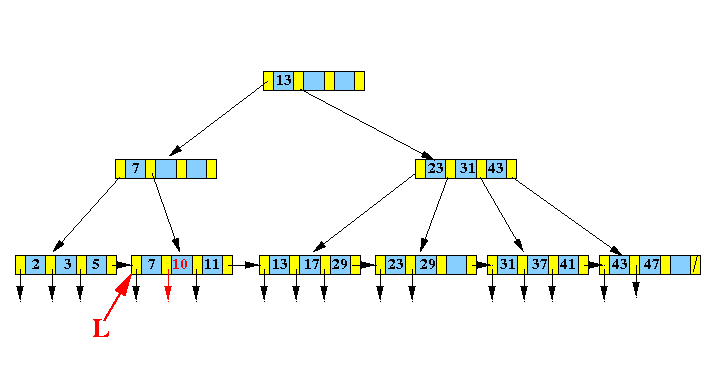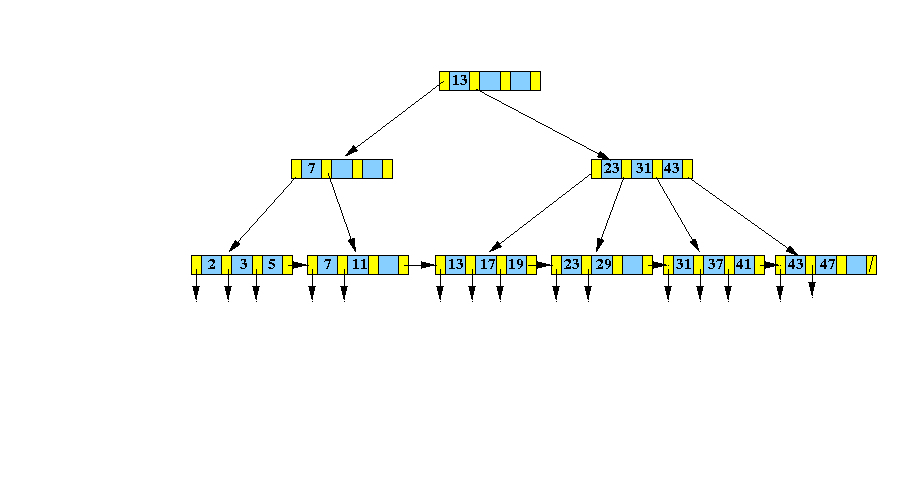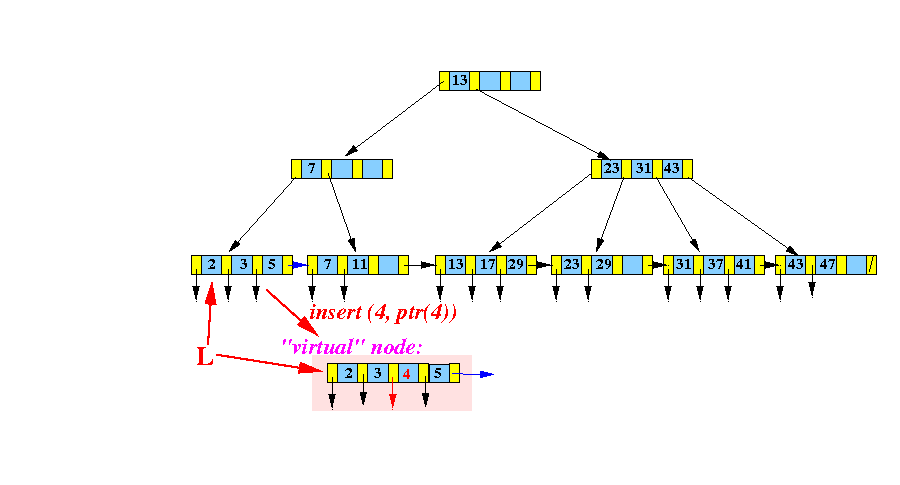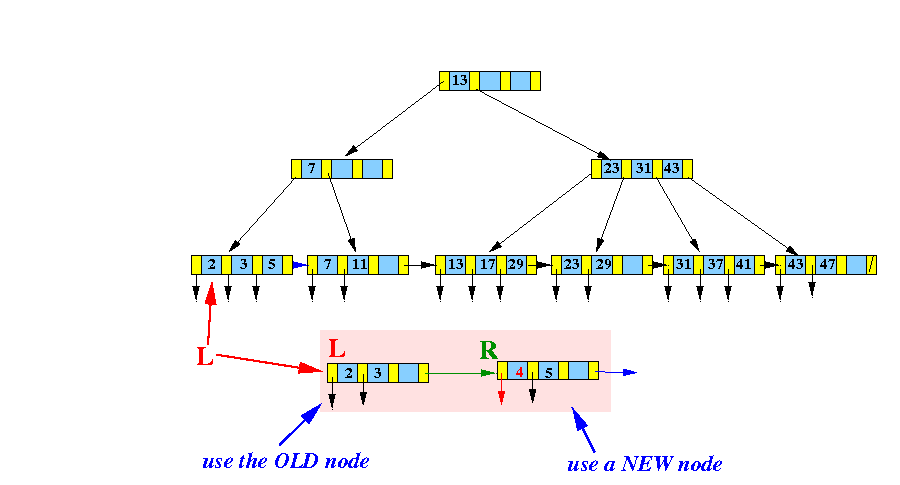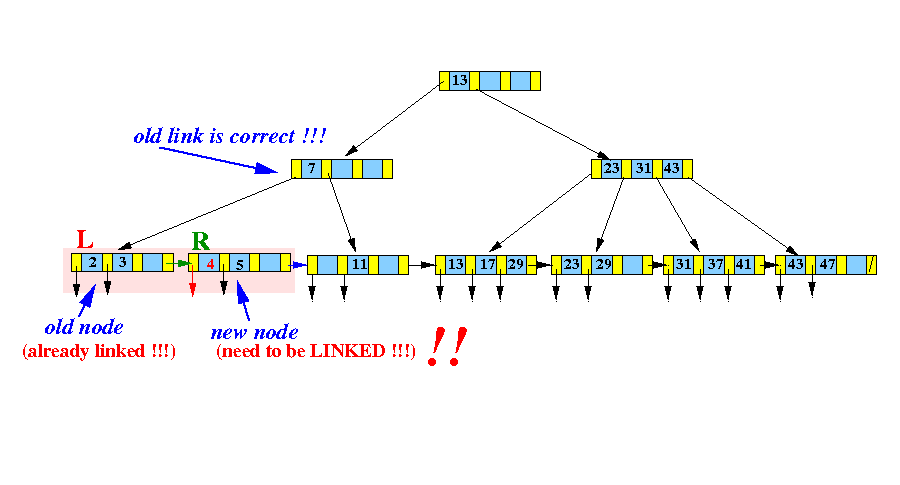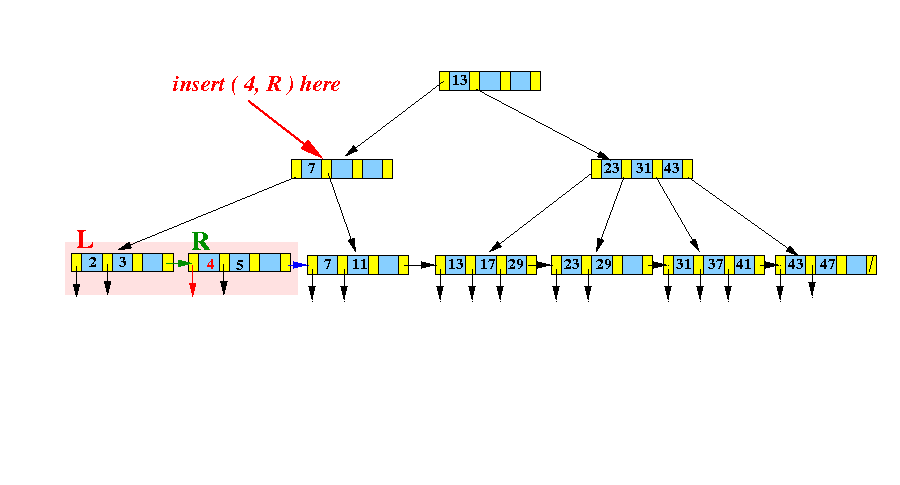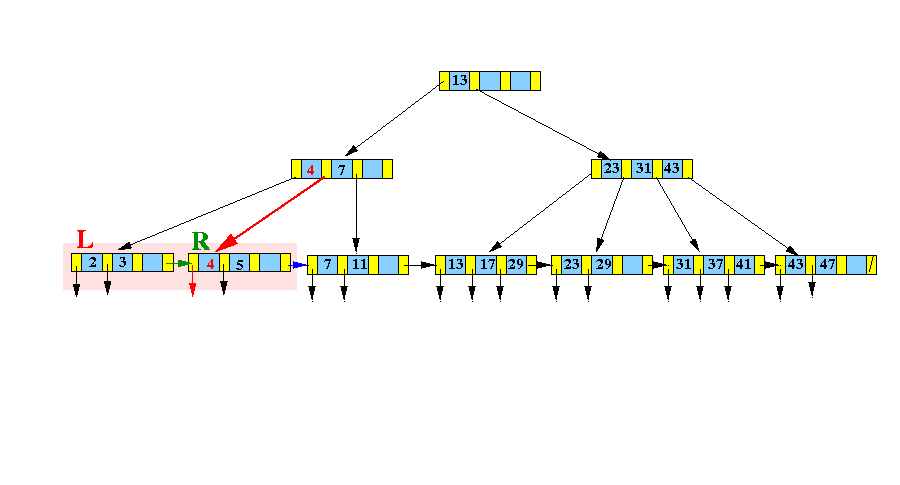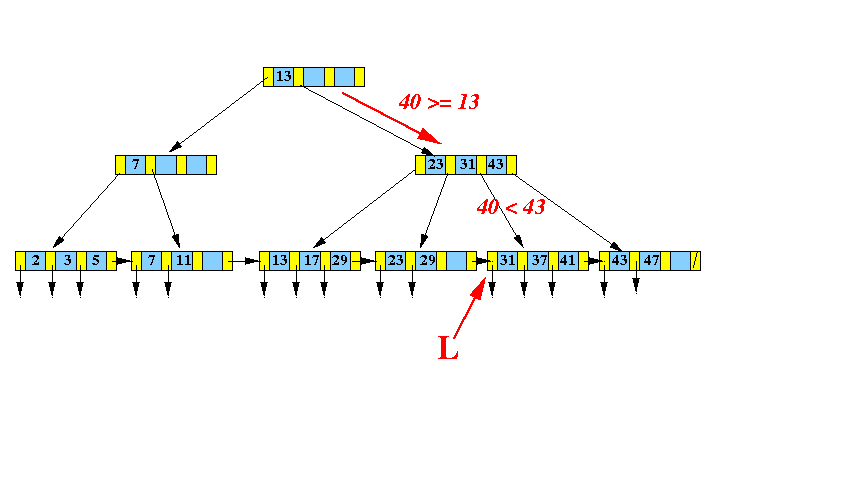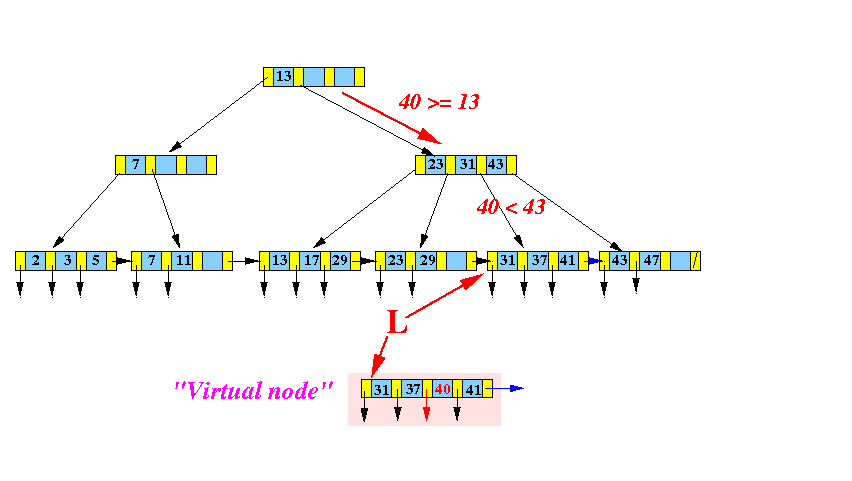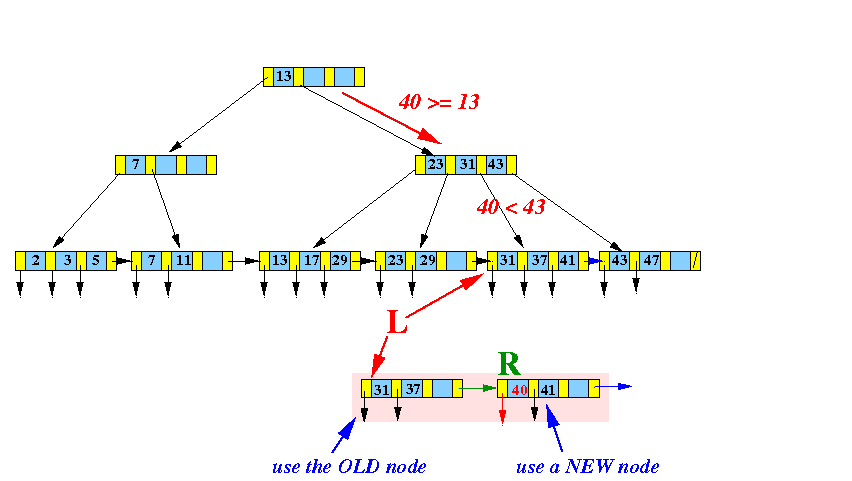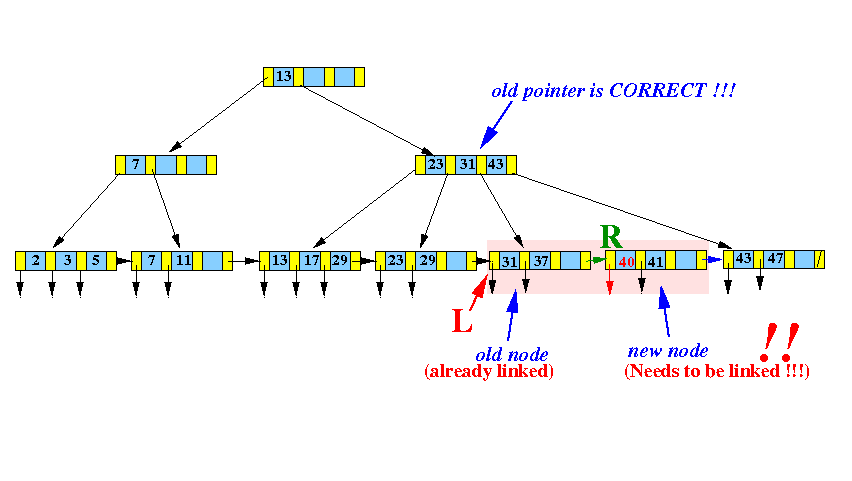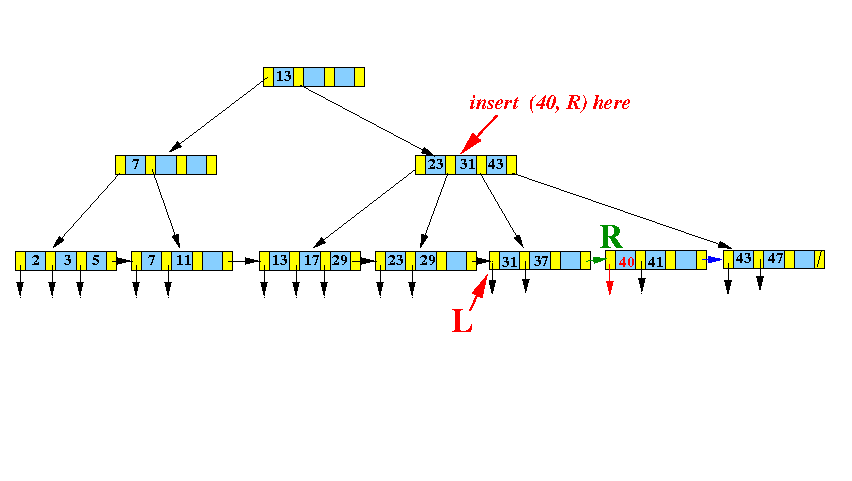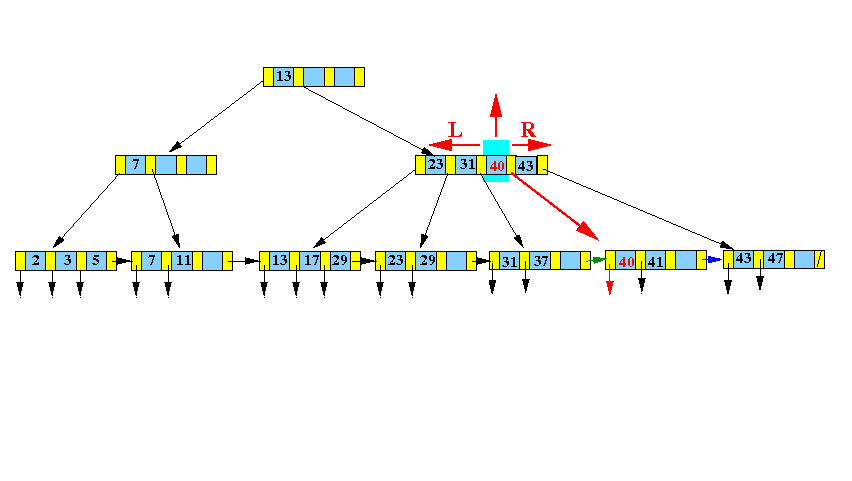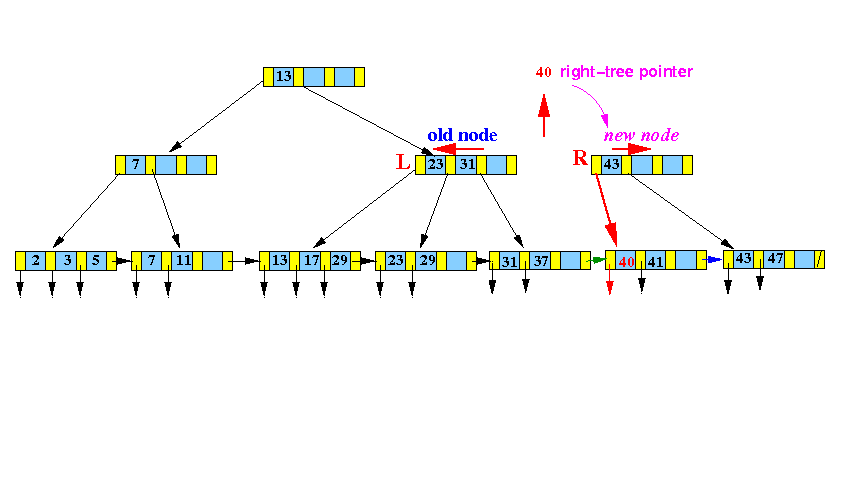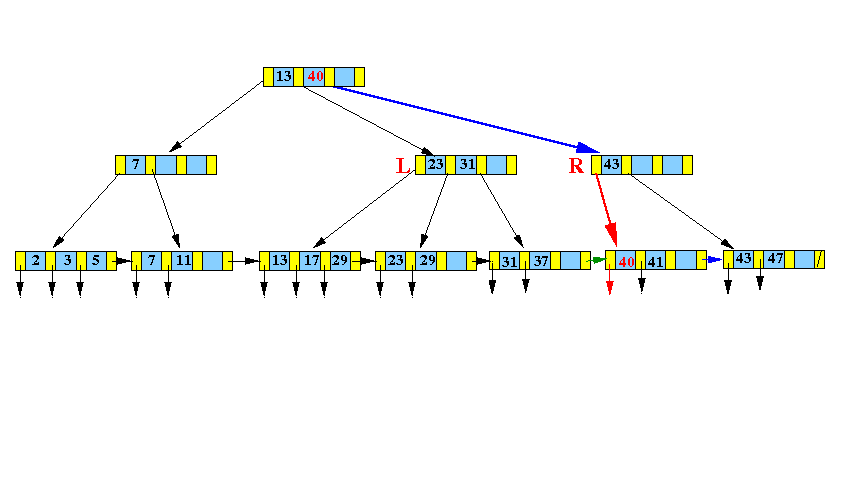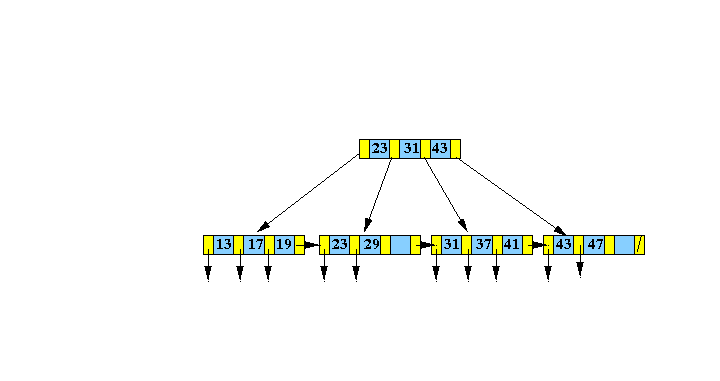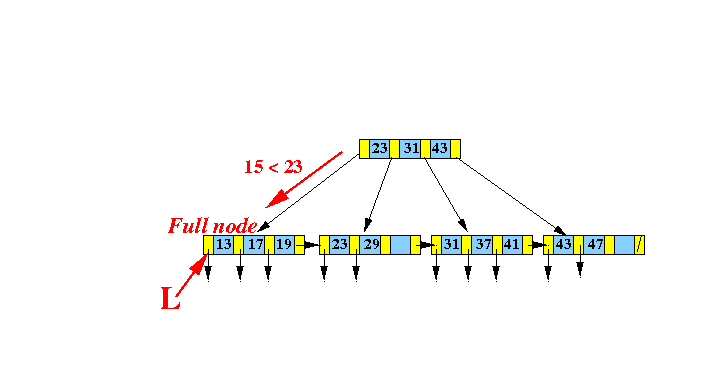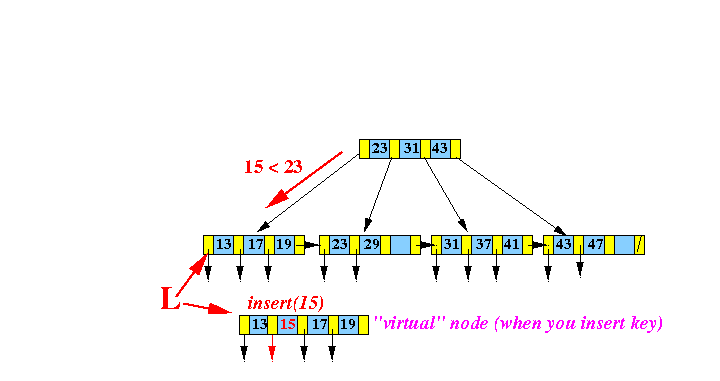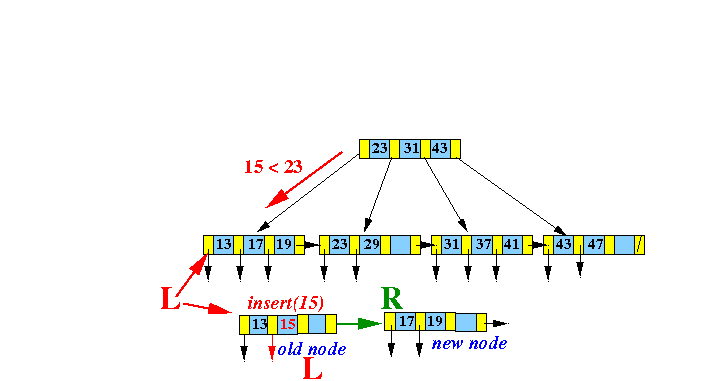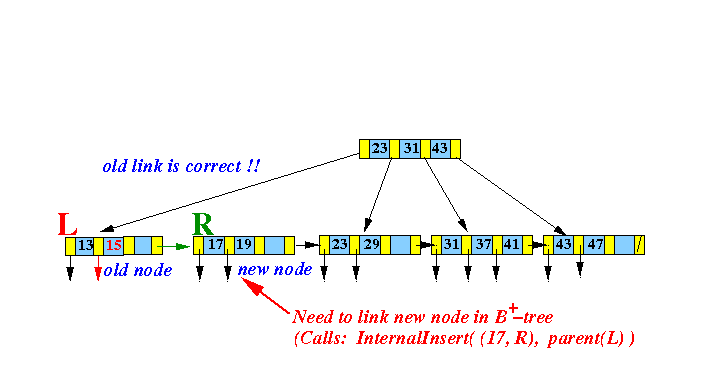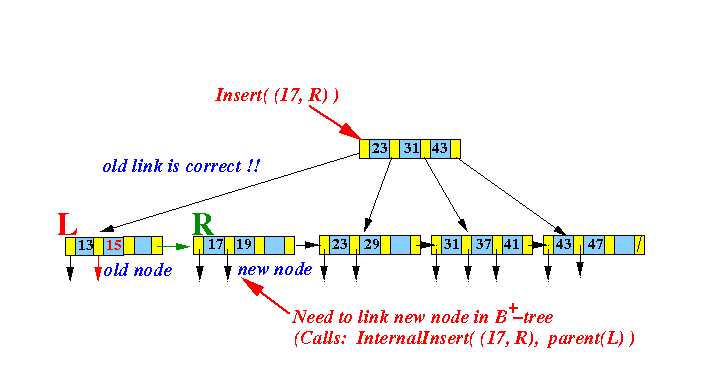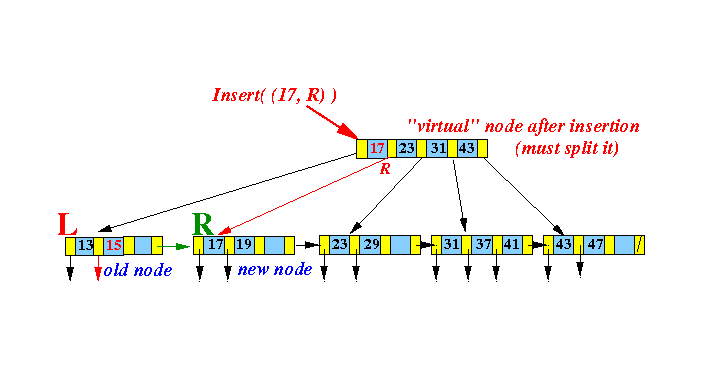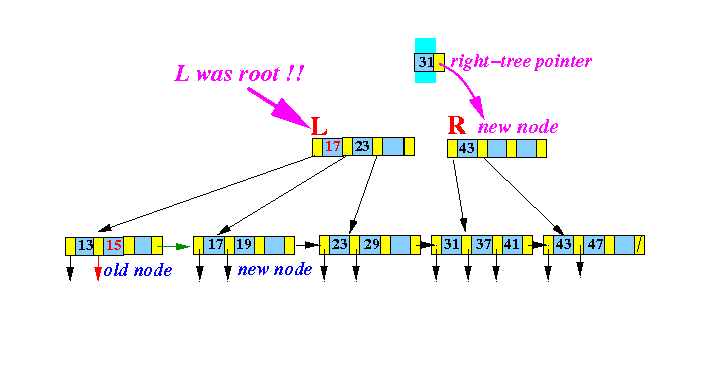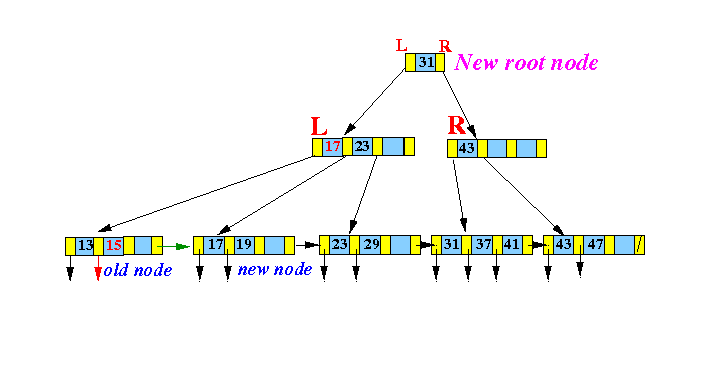Slideshow:
- Insert
( 10, recordPtr(10) ) into
the following
B+-tree:
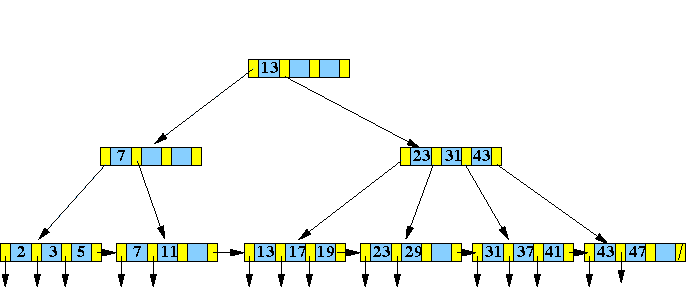
- Insert Algorithm:
- Find the
leaf node L that would
contain
search key
10:
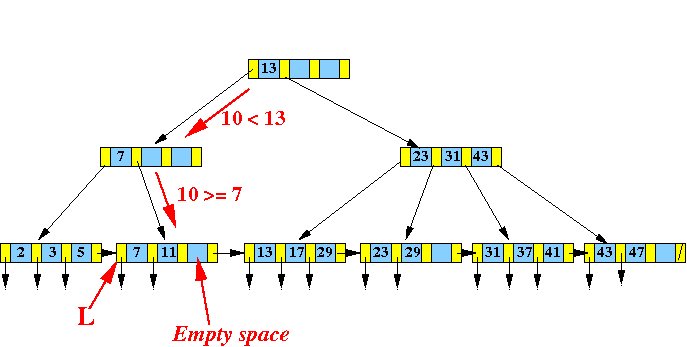
- Shift keys and
insert
( 10, recordPtr(10) )
into the correct position:
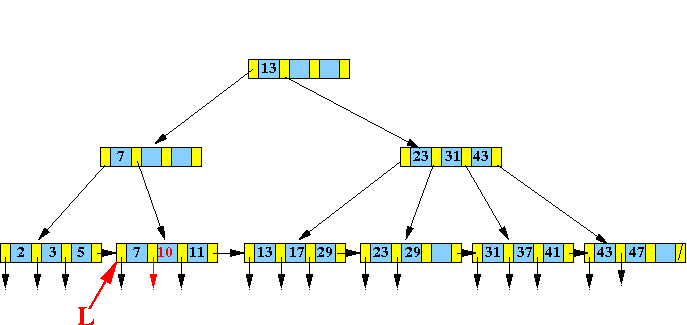
- Find the
leaf node L that would
contain
search key
10:
- Insert
( 4, recordPtr(4) ) into
the following
B+-tree:

- Leaf Insert Algorithm:
- Find the
leaf node L that would
contain
search key
4:

- Make a virtual node
by
inserting
( 4, recordPtr(4) )
into the correct position:
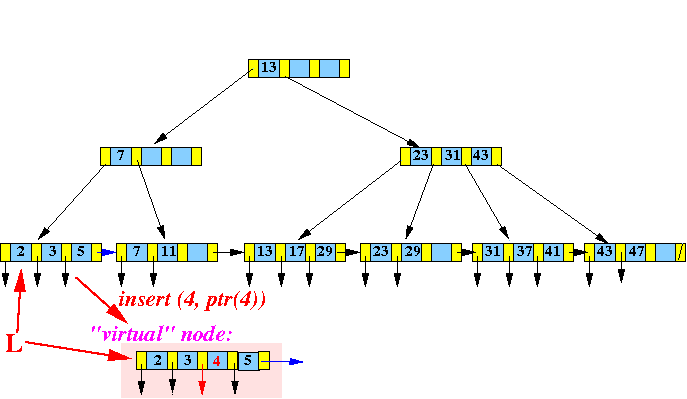
(The virtual node does not exist !
This step is only done to help you visualize the insert algorithm)
- Split this
virtual node into
2 "equal" halves:
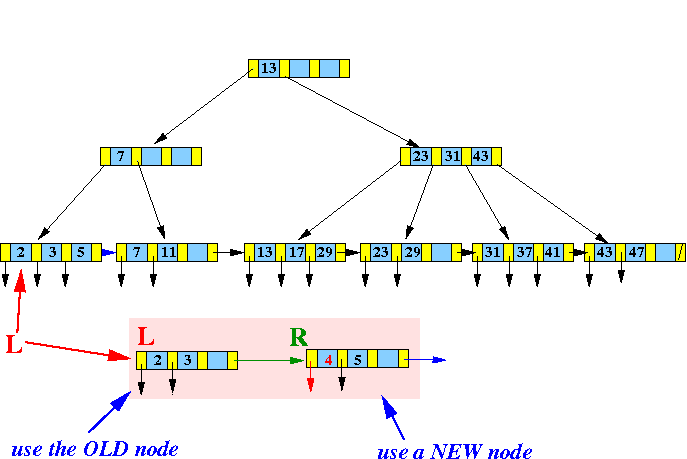
Redrawn:
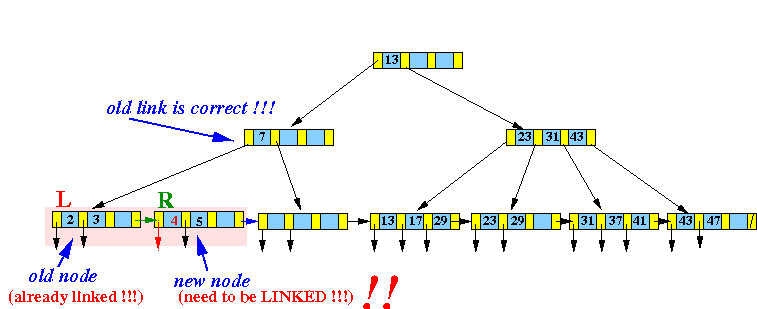
Next:
- Use
InsertInternal( ) to
insert:
- The middle search key (= 4) (and the new node pointer R) --- (4, R) --- into the parent node of L
Graphically:
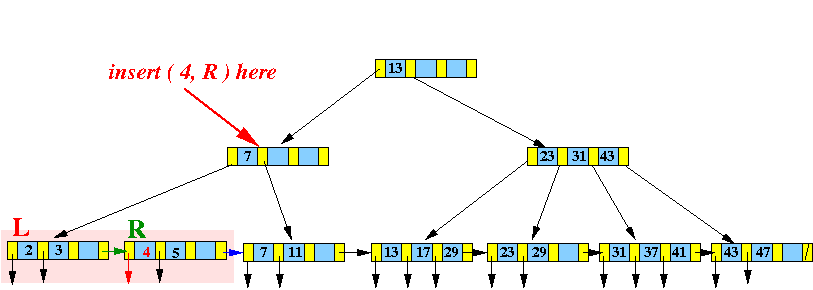
- Use
InsertInternal( ) to
insert:
- Find the
leaf node L that would
contain
search key
4:
- Continue with
the
InsertInternal( (4,R), parent(L) ) algorithm:
-
Insert
(4, R) into the
parent node of
L:

Result:

Notice that the node R is the right subtree of the key 4 !!!
DONE !!!
-
Insert
(4, R) into the
parent node of
L:
- Insert
( 40, recordPtr(40) ) into
the following
B+-tree:

- Insert Algorithm:
- Find the
leaf node L that would
contain
search key
40:
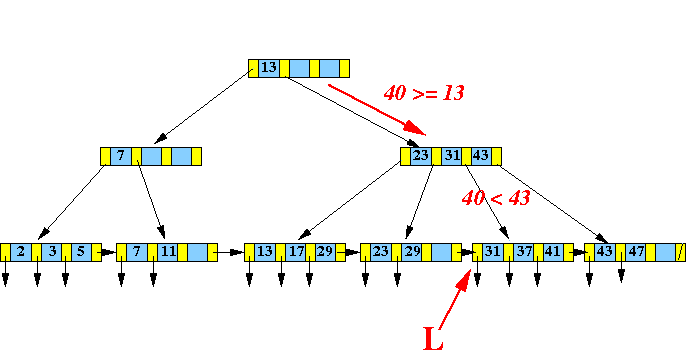
- Make a virtual node
by
inserting
( 40, recordPtr(40) )
into the correct position:
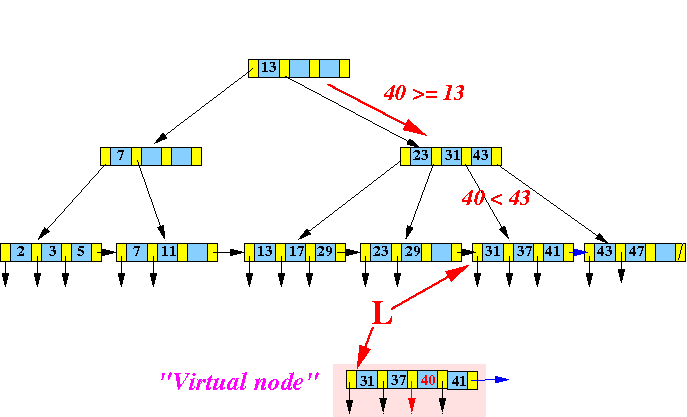
(The virtual node does not exist !!!!!
This step is only done to help you visualize the insert algorithm)
- Split this
virtual node into
2 "equal" halves:
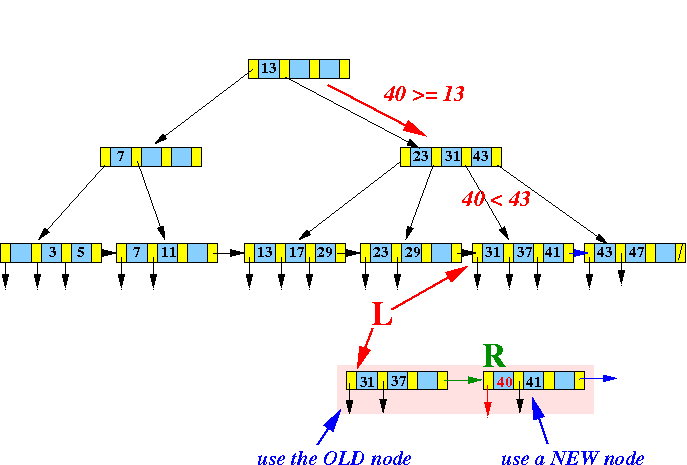
Redrawn:
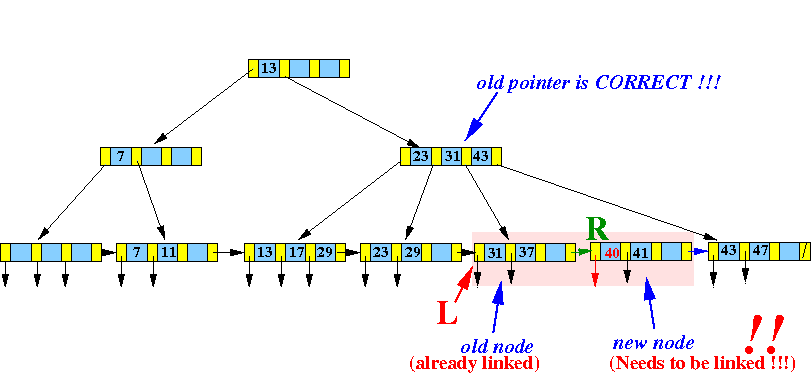
Next:
- Use InsertInternal( ) to insert (40, R) into the parent node of L
Graphically:
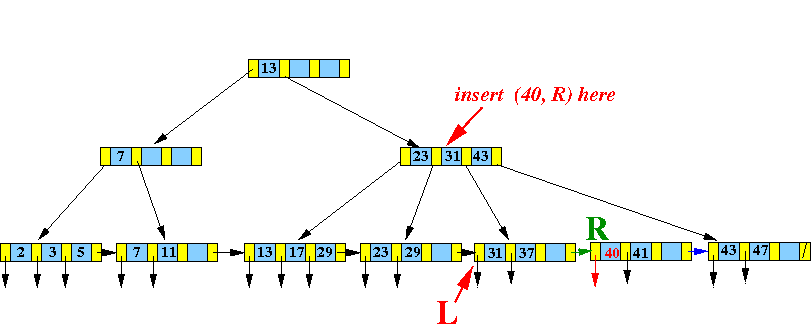
- Find the
leaf node L that would
contain
search key
40:
- Continue with the
InsertInternal( (40,R), parent(L) )
algorithm:
-
Insert
(40, R) into the
parent node of
L:

Result:
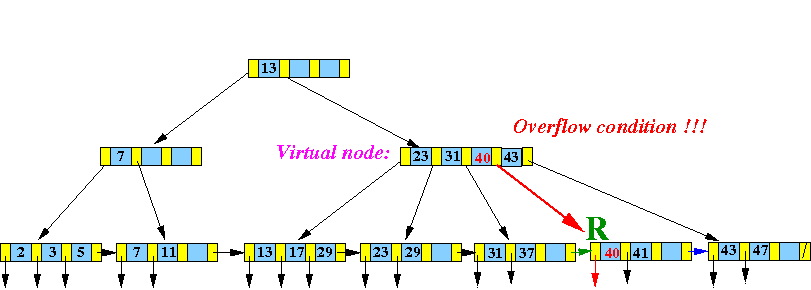
(The virtual node does not exist !!!!! Shown here to make algorithm more concrete)
This step is only done to help you visualize the insert algorithm
BTW: I will re-use the letters L and R for the next level of node split --- the letters L and R now denote different nodes !!!
-
Split this
virtual node
into
3 parts:
- Take the middle node out !!!
- Make a left half node L
- Make a right half node R
Graphically:
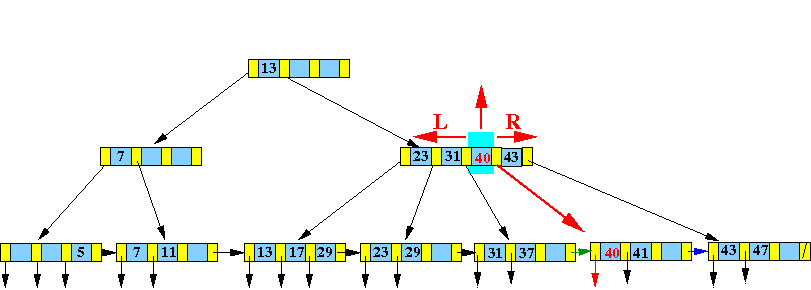
Result:
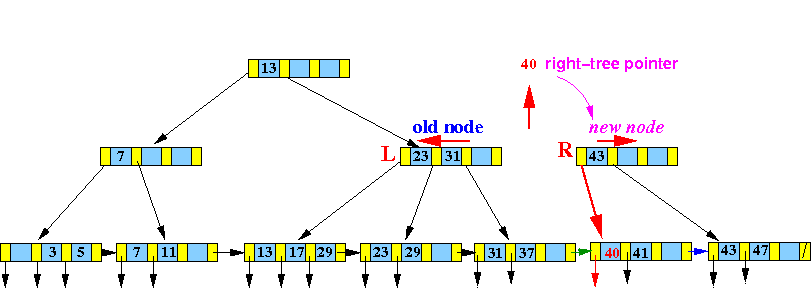
Notice that the new node R is the right subtree of the key 40 !!!
Recurse:
InsertInternal( (40, R), parent(L) )
- InsertInternal( (40, R), parent(L) ):
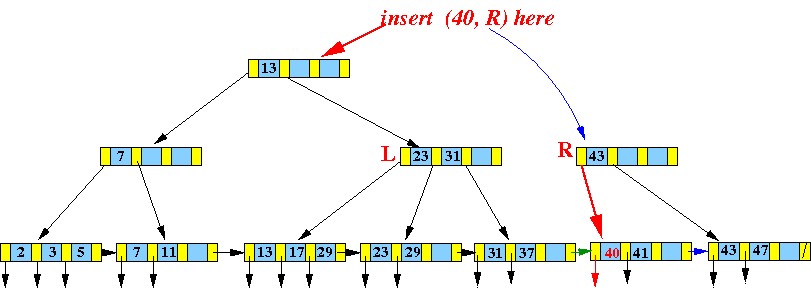
Result:
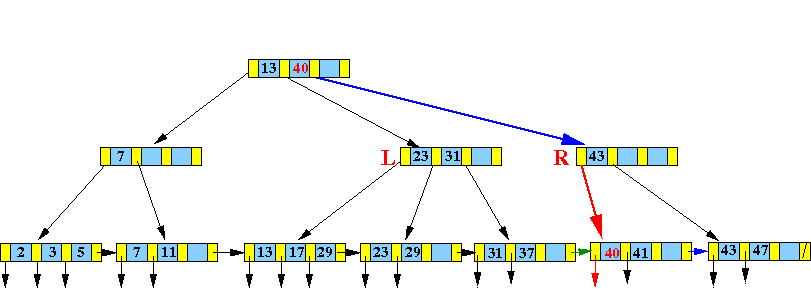
DONE !!!
-
Insert
(40, R) into the
parent node of
L:
